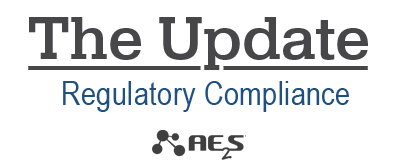One of the largest water organizations in the world submitted input to the National Drinking Water Advisory Council (NDWAC) about upcoming revisions to the per- and polyfluoroalkyl substances (PFAS) drinking water standard. The American Water Works Association (AWWA) underlined the need for a PFAS rule that protects public health, follows scientific process, and can be implemented affordably.
The U.S. Environmental Protection Agency (USEPA) is being advised by the NDWAC, a federal advisory committee, as it continues working on the revised PFAS drinking water standard. The proposed PFAS rule is expected to be announced in fall 2025 and finalized in spring 2026. In May, USEPA said it will keep the current National Primary Drinking Water Regulations (NPDWR) for perfluorooctanoic acid (PFOA) and perfluorooctane sulfonic acid (PFOS), which set nationwide limits for specific “forever chemicals” in drinking water.
In the AWWA’s eight-page letter to the NDWAC on July 21, the water organization asserts:
- Fifth Unregulated Contaminant Monitoring Rule data demonstrates the occurrence of PFHxS, PFNA, PFBS and HFPO-DA does not support national regulation for those chemicals.
- Hazard Index approach is not appropriate for a regulatory standard.
- The current PFAS rule presents feasibility challenges including affordability for impacted communities, water sector and regulatory capacity to implement the rule, and uncertainty regarding the regulatory scheme for PFAS treatment waste.
An AWWA email to its members about the letter to NDWAC said, “Exemptions for certain communities is not an effective solution, writing that ‘there is little reason to expect that this SDWA provision will afford meaningful relief for compliance with the PFAS rule requirements.’”
2024 Rule VS. Updated Rule
In April 2024, USEPA announced the final National Primary Drinking Water Regulation, including standards for PFOA and PFOS. At that time, USEPA established legally enforceable levels for these PFAS in drinking water and gave public water systems until 2029 to comply with the Maximum Contaminant Levels (MCLs). Here is how the limits established in the April 2024 rule compare the USEPA announcement in May 2025:
- PFOA and PFOS: Enforceable MCL at 4.0 parts per trillion (ppt) & Maximum Contaminant Level Goal (MCLG) is 0.0. USEPA will continue the PFOA and PFOS MCL and MCLG.
- PFNA, PFHxS, and HFPO-DA (GenX Chemicals): MCLG and MCL at 10 ppt and Health Based Water Concentrations (HBWC) of 10 ppt. USEPA will rescind the regulations and reconsider the regulatory determinations.
- PFBS: HBWC at 2,000 ppt. USEPA will rescind the regulations and reconsider the regulatory determinations.
- Mixtures of any two or more of PFNA, PFHxS, PFBS, and GenX chemicals: Hazard Index (HI) of 1. USEPA will rescind the regulations and reconsider the regulatory determinations.
PFAS Assistance
Federal funding opportunities for PFAS efforts include the Drinking Water State Revolving Fund (DWSRF) program, the Emerging Contaminants (EC) Small or Disadvantaged Communities (EC-SDC) grant program, and funding resources, like USEPA’s Water Infrastructure Finance and Innovation Act (WIFIA) program, that can be leveraged to provide supplemental, flexible, low-cost credit assistance to public and private borrowers.
For information about the PFAS Rule, visit Final PFAS National Primary Drinking Water Regulation and PFAS NPDWR Implementation. For more information about PFAS Technical Assistance, visit EPA Water Technical Assistance. Water systems can also request EPA WaterTA services. AE2S also has PFAS information in the Perspectives and Insights section of our website.

